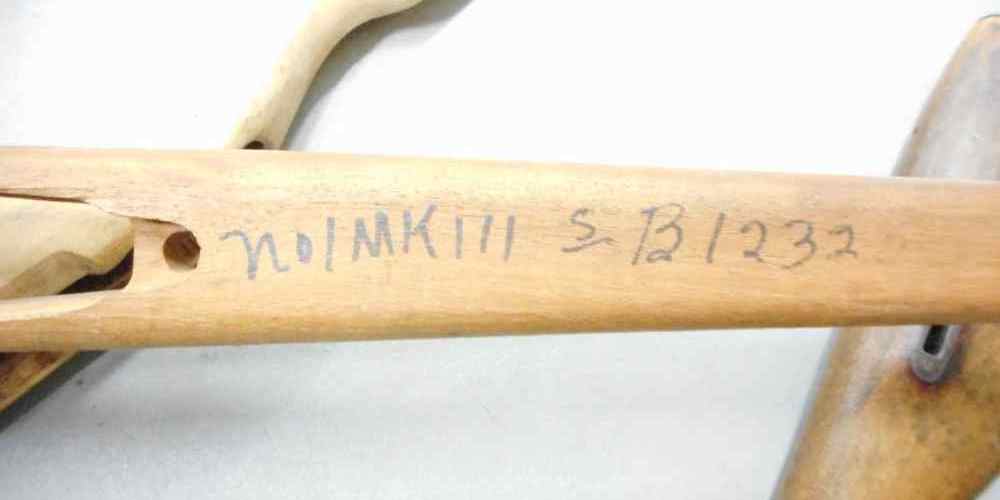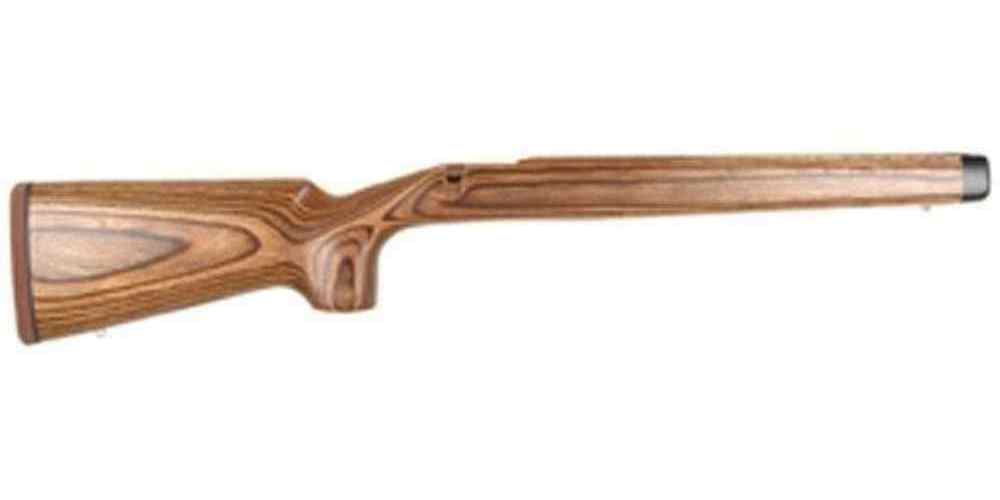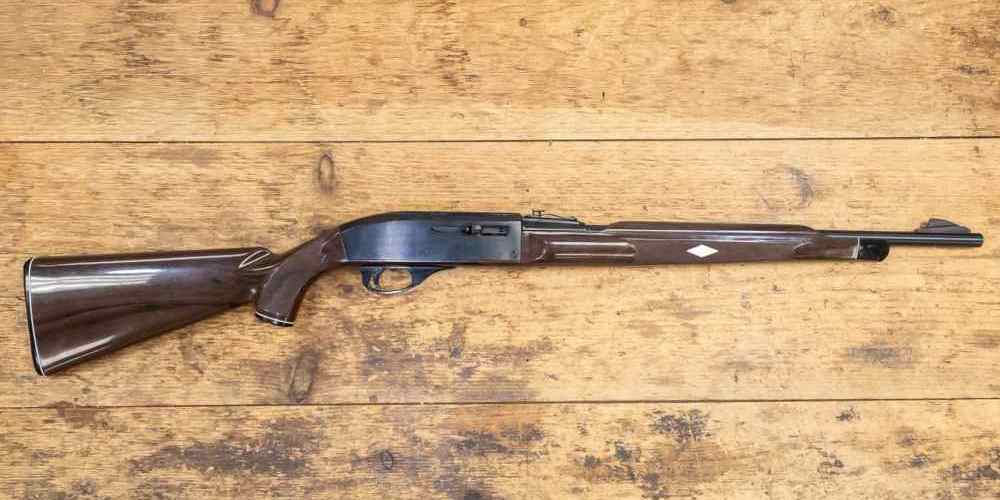“Enhance your aim with the perfect rifle stock.”
Material Composition of Rifle Stocks
When it comes to shooting performance, many factors come into play, including the material composition of the rifle stock. The stock of a rifle is the part that connects the shooter to the firearm, providing stability and support during shooting. The material used to make the stock can have a significant impact on the overall performance of the rifle. One of the most common materials used for rifle stocks is wood. Wood has been a popular choice for centuries due to its natural beauty and durability. Wood stocks can provide a stable platform for shooting, absorbing recoil and reducing felt recoil for the shooter. However, wood stocks can be prone to warping and swelling when exposed to moisture, which can affect the accuracy of the rifle. Another popular material for rifle stocks is synthetic materials such as fiberglass or polymer. These materials are lightweight, durable, and resistant to moisture, making them ideal for use in various weather conditions. Synthetic stocks are also less prone to warping and swelling, ensuring consistent performance over time. Additionally, synthetic stocks can be molded into different shapes and designs, allowing for a more customized fit for the shooter. Carbon fiber is another material that is gaining popularity in the world of rifle stocks. Carbon fiber is incredibly lightweight and strong, making it an excellent choice for shooters who prioritize mobility and maneuverability. Carbon fiber stocks can also help reduce recoil and muzzle rise, improving accuracy and shot placement. However, carbon fiber stocks can be more expensive than traditional wood or synthetic stocks. Aluminum is another material that is commonly used in rifle stocks. Aluminum stocks are lightweight and strong, providing stability and support during shooting. Aluminum stocks are also resistant to corrosion and wear, ensuring longevity and durability. However, aluminum stocks can be more expensive than other materials and may not provide as much recoil absorption as wood or synthetic stocks. In recent years, composite materials have become increasingly popular for rifle stocks. Composite stocks are made from a combination of different materials, such as fiberglass, carbon fiber, and Kevlar. These stocks offer the benefits of each material, providing a lightweight, durable, and stable platform for shooting. Composite stocks can also be customized to fit the shooter’s preferences, making them a versatile option for shooters of all levels. Overall, the material composition of a rifle stock can have a significant impact on shooting performance. Whether you prefer the classic look of wood, the durability of synthetic materials, or the lightweight strength of carbon fiber, choosing the right stock for your rifle is essential for achieving optimal accuracy and performance. Consider your shooting style, preferences, and budget when selecting a rifle stock, and remember that the material composition plays a crucial role in your overall shooting experience.
Impact of Stock Design on Accuracy
When it comes to shooting performance, many factors come into play. One often overlooked aspect is the design of the rifle stock. The stock of a rifle plays a crucial role in accuracy and comfort while shooting. In this article, we will explore how different stock designs can impact shooting performance. One of the key factors that affect shooting accuracy is the ergonomics of the rifle stock. A well-designed stock should fit comfortably in the shooter’s hands and provide a stable platform for aiming. Stocks that are too long or too short can cause discomfort and affect the shooter’s ability to maintain a consistent shooting position. Additionally, stocks that are too heavy or too light can throw off the balance of the rifle, making it more difficult to hold steady while aiming. Another important aspect of stock design is the material used. Stocks can be made from a variety of materials, including wood, synthetic materials, and composite materials. Each material has its own unique properties that can affect shooting performance. For example, wood stocks are known for their durability and natural feel, but they can be heavier than synthetic stocks. Synthetic stocks, on the other hand, are lightweight and weather-resistant, making them a popular choice for hunters and competitive shooters. The shape of the stock also plays a role in shooting performance. Stocks come in a variety of shapes, including traditional straight stocks, thumbhole stocks, and pistol grip stocks. Each shape offers its own advantages and disadvantages. For example, thumbhole stocks provide a more ergonomic grip, while pistol grip stocks allow for better control and stability. The shape of the stock should be chosen based on the shooter’s preferences and shooting style. In addition to ergonomics, the design of the stock can also affect the rifle’s accuracy. Stocks that are properly bedded and free-floated can help improve the rifle’s accuracy by reducing barrel harmonics and minimizing interference with the barrel. Bedding refers to the process of securing the action of the rifle to the stock, while free-floating involves ensuring that the barrel does not come into contact with the stock. These techniques help to improve the rifle’s consistency and precision. Stock design can also impact the recoil of the rifle. Stocks that are properly designed can help to absorb and distribute recoil, making shooting more comfortable and reducing fatigue. Stocks with recoil pads or adjustable butt plates can further enhance the shooter’s comfort and control. Additionally, stocks with adjustable cheek rests or length of pull can help to customize the fit of the rifle to the shooter’s preferences. In conclusion, the design of the rifle stock plays a crucial role in shooting performance. From ergonomics to material choice to shape, each aspect of the stock can impact accuracy, comfort, and recoil. By choosing a stock that fits well and is properly bedded and free-floated, shooters can improve their accuracy and consistency. Whether hunting, target shooting, or competing, the right stock design can make a significant difference in shooting performance.
Importance of Stock Length and Fit
When it comes to shooting performance, many factors come into play, including the type of rifle stock being used. The stock of a rifle is the part that connects the shooter to the firearm, and its length and fit can greatly impact accuracy and comfort. In this article, we will explore the importance of stock length and fit in relation to shooting performance. One of the key factors to consider when it comes to rifle stocks is the length of the stock. The length of the stock refers to the distance from the trigger to the end of the stock. A stock that is too long can cause the shooter to have to stretch their arms out too far, leading to discomfort and decreased accuracy. On the other hand, a stock that is too short can cause the shooter to hunch over, leading to poor shooting form and decreased accuracy. Finding the right stock length for your body type is crucial for achieving optimal shooting performance. To determine the correct stock length for you, it is recommended to visit a professional gunsmith or shooting instructor who can help you find the perfect fit. They will take into account factors such as your arm length, shoulder width, and shooting stance to ensure that the stock length is just right for you. In addition to stock length, the fit of the stock is also important for shooting performance. The fit of the stock refers to how well the stock conforms to the shooter’s body, providing support and stability while shooting. A stock that fits well will help reduce recoil, improve accuracy, and increase comfort during long shooting sessions. When it comes to stock fit, there are a few key areas to consider. The first is the comb height, which is the part of the stock that rests against the shooter’s cheek. The comb height should be adjusted so that the shooter’s eye is in line with the sights or scope of the rifle. This will help ensure proper sight alignment and improve accuracy. Another important aspect of stock fit is the length of pull, which is the distance from the trigger to the back of the stock. A proper length of pull will allow the shooter to comfortably reach the trigger while maintaining a proper shooting stance. If the length of pull is too short, the shooter may have to contort their body to reach the trigger, leading to poor shooting form and decreased accuracy. Overall, the length and fit of a rifle stock play a crucial role in shooting performance. By ensuring that the stock is the right length and fits well, shooters can improve their accuracy, reduce recoil, and increase comfort while shooting. If you are experiencing issues with your shooting performance, it may be worth considering adjusting the length and fit of your rifle stock to see if it makes a difference. Remember, a properly fitting stock can make all the difference in your shooting experience.
Effects of Stock Weight on Stability
When it comes to shooting performance, every detail matters. One often overlooked factor that can greatly impact your accuracy and stability is the weight of your rifle stock. The weight of your stock can affect how well you can control your rifle, how steady your aim is, and ultimately, how accurate your shots are. A heavier stock can provide more stability when shooting. The added weight helps to absorb recoil and reduce muzzle rise, allowing you to stay on target more easily. This can be especially beneficial for long-range shooting or shooting in windy conditions where stability is key. A heavier stock can also help to dampen vibrations, resulting in a smoother shooting experience. On the other hand, a lighter stock can be more maneuverable and easier to carry for extended periods of time. This can be advantageous for hunting or shooting competitions where you may need to move quickly and shoot from different positions. However, a lighter stock may not provide as much stability as a heavier stock, especially when shooting larger calibers or in adverse conditions. Finding the right balance between weight and stability is crucial for optimal shooting performance. Some shooters may prefer a heavier stock for its added stability, while others may prefer a lighter stock for its maneuverability. Ultimately, the best stock weight for you will depend on your shooting style, preferences, and the type of shooting you do. It’s important to consider the overall weight of your rifle when choosing a stock. A heavier stock may be more stable, but if it makes your rifle too heavy to comfortably carry or shoot, it could negatively impact your performance. Conversely, a lighter stock may be easier to handle, but if it sacrifices too much stability, it could also affect your accuracy. In addition to weight, the material of the stock can also affect its performance. Synthetic stocks are typically lighter and more durable than wood stocks, but they may not provide as much stability. Wood stocks, on the other hand, can be heavier but offer a more traditional look and feel. Some shooters may prefer the aesthetics of a wood stock, while others may prioritize performance over appearance. Ultimately, the best stock for you will depend on your individual preferences and shooting needs. It’s important to experiment with different stocks to find the one that works best for you. Consider factors such as weight, material, and overall feel when choosing a stock for your rifle. In conclusion, the weight of your rifle stock can have a significant impact on your shooting performance. A heavier stock can provide more stability and absorb recoil, while a lighter stock can be more maneuverable. Finding the right balance between weight and stability is key to optimizing your accuracy and overall shooting experience. Experiment with different stocks to find the one that works best for you and remember that the best stock for one shooter may not be the best for another.
Customizing Rifle Stocks for Improved Performance
When it comes to shooting performance, many factors come into play. One often overlooked aspect is the rifle stock. The stock of a rifle plays a crucial role in how well a shooter can handle and control the weapon. Customizing rifle stocks can greatly improve shooting performance by providing a better fit, improved ergonomics, and increased stability. One of the most important aspects of a rifle stock is its fit to the shooter. A stock that is too long or too short can make it difficult for a shooter to properly shoulder the rifle and maintain a consistent shooting position. This can lead to inconsistencies in aim and accuracy. Customizing the length of pull of a rifle stock to fit the shooter’s body can greatly improve comfort and control, leading to more accurate shooting. In addition to fit, the ergonomics of a rifle stock can also have a significant impact on shooting performance. A stock that is uncomfortable to hold or difficult to grip can make it challenging for a shooter to maintain proper control of the rifle. Customizing the shape and design of a rifle stock to fit the shooter’s hand can greatly improve comfort and control, leading to more consistent and accurate shooting. Another important factor to consider when customizing a rifle stock is stability. A stock that is too flimsy or flexible can make it difficult for a shooter to maintain a steady aim and absorb recoil. Customizing the material and construction of a rifle stock to provide increased stability can greatly improve shooting performance by reducing muzzle rise and improving follow-up shots. When customizing a rifle stock for improved performance, it is important to consider the shooter’s individual preferences and shooting style. Some shooters may prefer a traditional wood stock for its classic look and feel, while others may prefer a synthetic stock for its durability and weather resistance. By customizing the material and finish of a rifle stock to fit the shooter’s preferences, it is possible to create a stock that not only improves shooting performance but also enhances the overall shooting experience. In conclusion, customizing rifle stocks can greatly improve shooting performance by providing a better fit, improved ergonomics, and increased stability. By customizing the length of pull, shape, and material of a rifle stock to fit the shooter’s body and preferences, it is possible to create a stock that enhances comfort, control, and accuracy. Whether you are a competitive shooter looking to gain an edge or a recreational shooter looking to improve your skills, customizing your rifle stock is a worthwhile investment that can greatly enhance your shooting experience.







